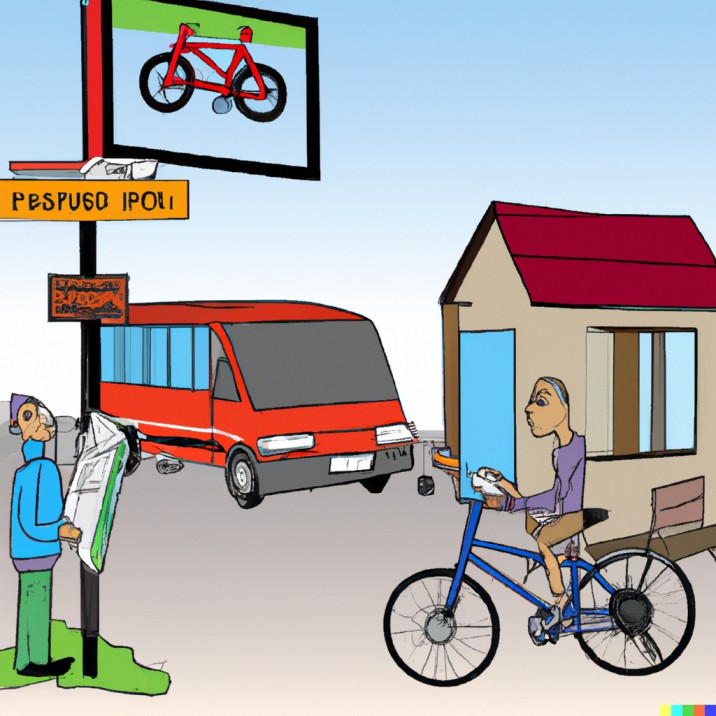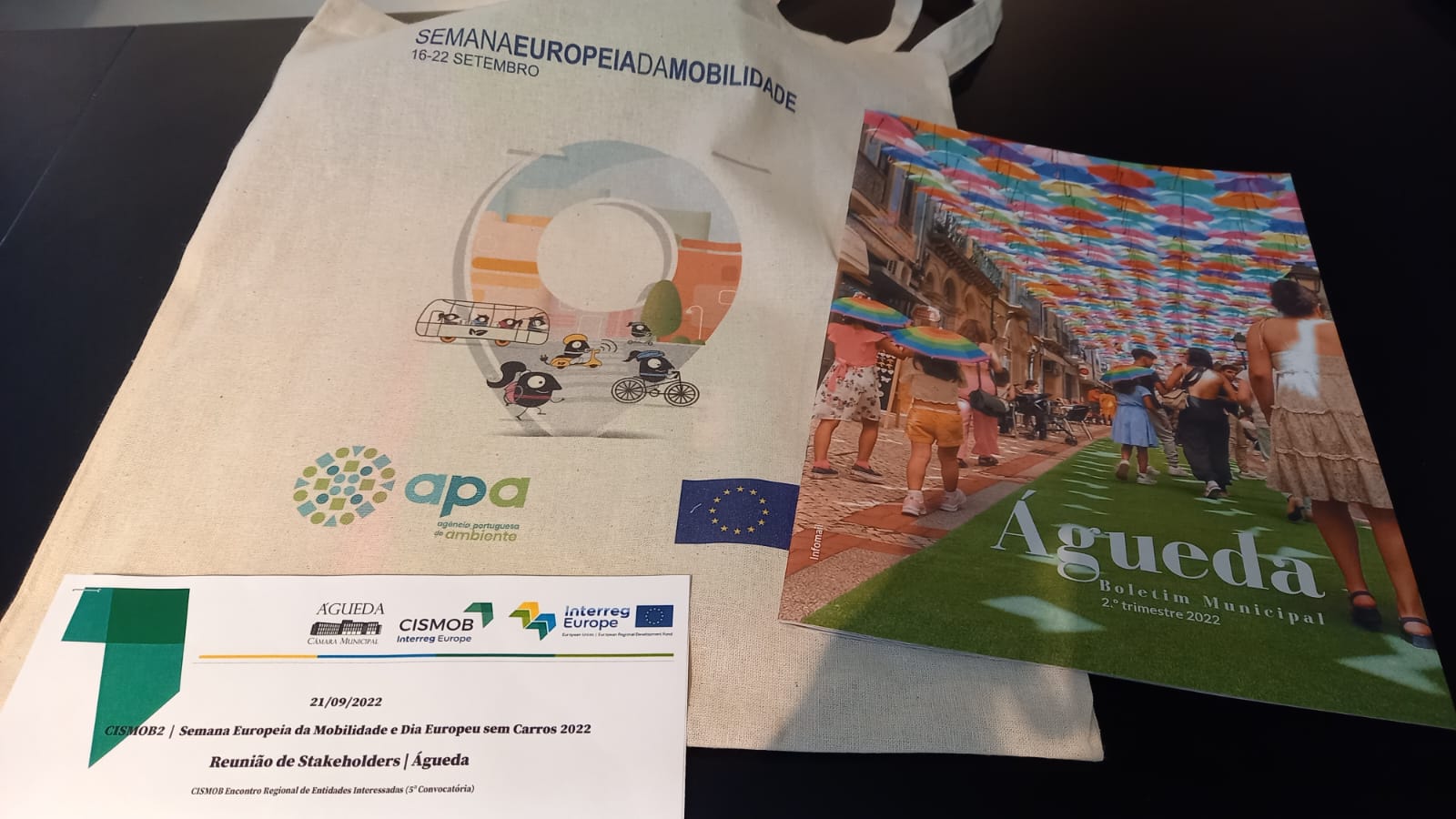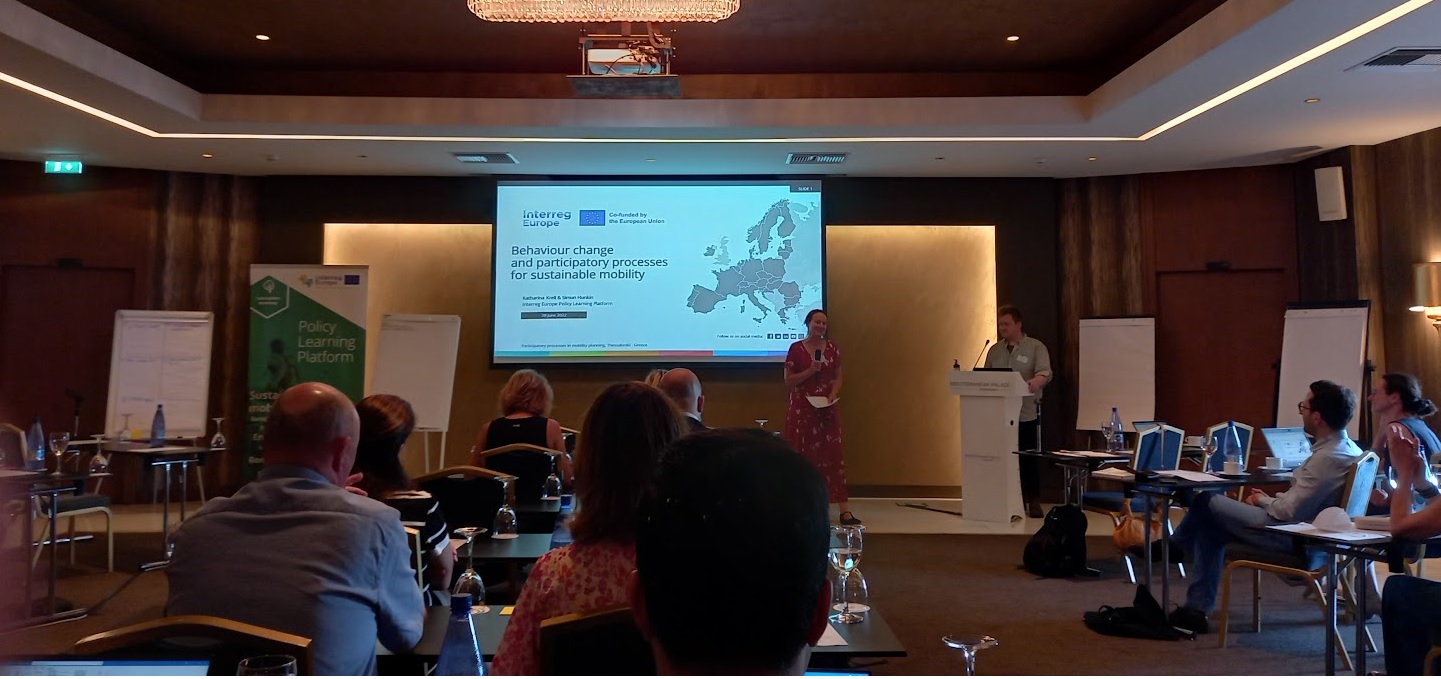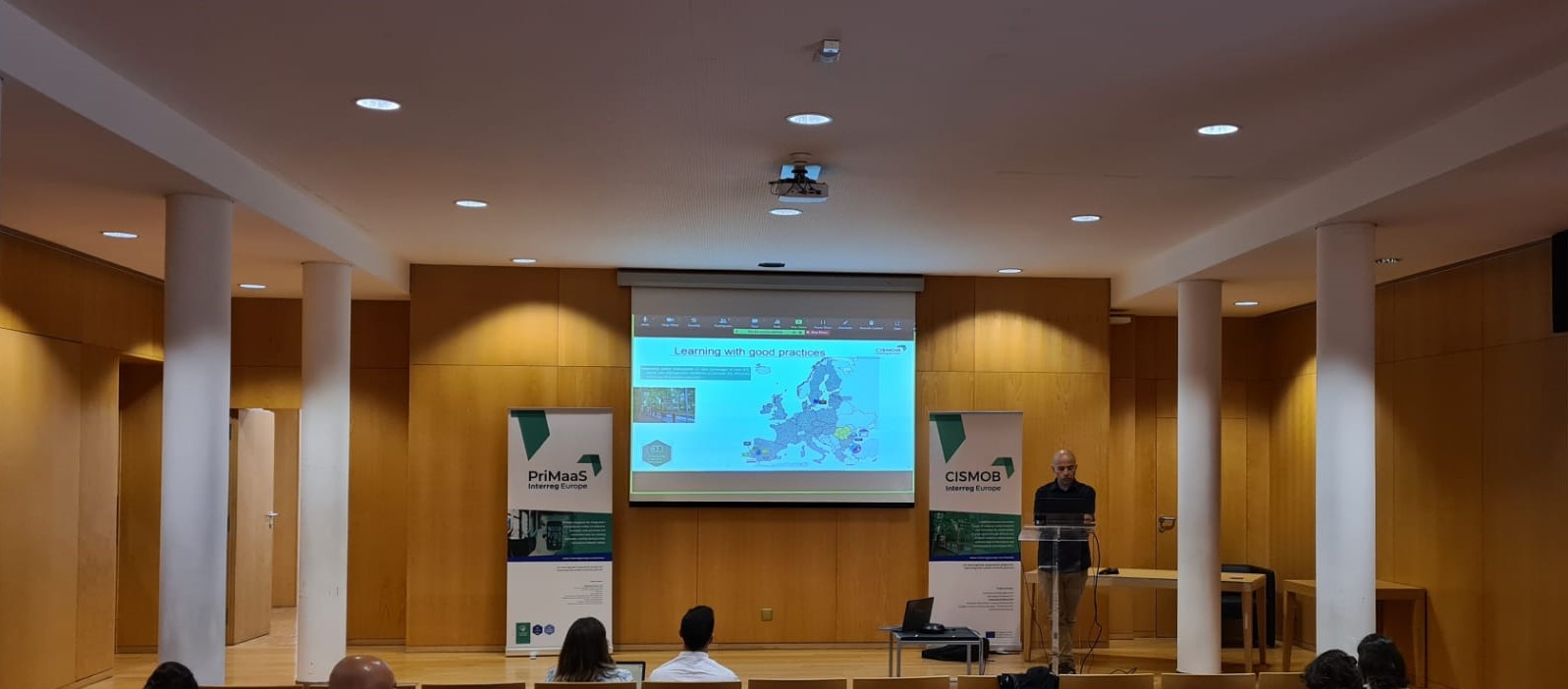
Project's Impacts and Legacy
CISMOB impact is expected to continue to grow and lead to a more efficient transportation system based on ICT across CISMOB regions and beyond
CISMOB main vision is to promote innovative ways to reduce carbon footprint and increase the sustainability of urban areas by improving the efficiency in the use of urban transport infrastructure through ICT.
In a context of increasing availability of sensor technology to monitor and record large amounts of data, a common challenge to policy makers is to identify the best practices to take advantage of these new sources of data and use them to prioritize intervention areas, to manage efficiently current road networks, to inform citizens and motivate them to choose more sustainable mobility options.
CISMOB will focus on improving the implementation of regional policies and local mobility programmers by having a thorough understanding about the different transport-related impacts and the main vulnerabilities associated to different zones of the territory. CISMOB partners consider that policy and local mobility programs should not be focused in minimizing a particular parameter (ex. Levels of congestion), but rather to promote holistic approaches capable of responding to the questions: what (to minimize)? Why? When? Where? And how? Regional and Policy instruments should also provide a framework of indicators to assess and inform the costs and benefits of environmentally effectiveness of different mobility solutions.
CISMOB integrates a set of cities and regions of heterogenic characteristics, which are represented by institutions with complementary profiles. All partners will cooperate together in order to learn best practices of sustainable management of urban transport taking advantage of ICT. Workshops, staff exchange-programs and dissemination actions will be carried out with the aim of exchanging local experiences, learning best practices and enhancing the citizen’s participation.

€1,324,748.00
Low-carbon economy
Despite the new teleworking trends, our roads are increasingly congested while public transport is still far from recovering pre-pandemic demand. After the covid-19 pandemic, the challenge of green and accessible mobility for everyone is becoming more complex. It is essential to provide attractive fares, safe payment systems and reliable updated ICT based info especially about occupancy and comfort levels, to incentivize passengers in selecting more sustainable mobility choices.
ICT tools also have a fundamental role in promoting alternative solutions such as micromobility. Typical examples are real-time location, new forms of payment, integrated services, and real-time environmental conditions. Electric mobility also gained additional importance to promote more sustainable mobility in individual vehicles when public transport alternatives or soft mobility are not viable. In this field, ICT tools are vital to support fleet management, interoperability, information, and payment systems.
CISMOB partners meet again for another year full of activities and exchange of experiences, with the aim of supporting the regions in designing their policy instruments to adapt to the new post-pandemic mobility paradigm
Main features of this policy instrument
The Operational Programme of the Centro Region (Centro2020) is a regional development strategy built on a strong mobilization of all regional partners. The program is a key tool in the implementation of the Smart Specialisation strategy defined in CENTRO Region (RIS3), which will act as a rationalizing element of investments to support and implementing the competitiveness priorities. The CISMOB objectives are in line with the thematic objective "Supporting the transition to a low-carbon economy in all sectors" (102.377.467 EUR from ERDF) and the investment priority 4e - promoting low-carbon strategies for all types of territories, Simultaneously, the project aligns strategically with innovation platforms (IP) related to smart specialization RIS 3, such as the promotion of technologies for quality of life (IP3); and territorial innovation (IP4) , in particular the development of creative and smart cities (Area 4.2) .
First it is not envisaged the use of FI in the Investment priority 4e. Therefore, CISMOB will encourage synergies between European Structural funds, Horizon 2020 and other research programmes. Second, there is no incentives for inter-municipal cooperation, namely by supporting the development of green mobility projects based on ICT beyond the scope of sustainable mobility plans to be financed.
The Strategy for Sustainable Mobility follows the municipal and European concerns for the promotion of smart, sustainable and inclusive growth, developing the proposals in the Intermunicipal Plan for Mobility and Transport in the Region of Aveiro (PIMTRA) at the municipal level, within the municipal activity for the 2020 horizon in the field of mobility.
Priority or measure concerned:
• Optimization of the pedestrian and cycling network
• Restructuring of public transportation network
• Expand the electric bicycles sharing system to other places Improving accessibility for all
Promote increased electric vehicle fleet
• Actions to change behaviors towards sustainable mobility.
Why it should be improved?
Necessity of inclusion of multiscale environmental and performance indicators (from street / intersection level to city / regional level) to support city council to determine and disseminate environmental gains arising from city actions to improve urban sustainability. Essential to develop a methodology for prioritizing the areas of intervention towards the sustainable urban development and equitable governance. There is also necessity of promoting synergies and transfer technical and scientific knowledge among city administration, universities and private sector, namely on ICT, transport system and environmental assessment.
Objective and characteristics
Bucharest Metropolitan Transport Authority (AMTB) was established on the initiative of the World Bank and the International Monetary Fund in 2011, and its main responsibilities is to draft and approve transport programs so that the transport requirements of citizen are ensured within Bucharest metropolitan area, for all types of transportation (subway, buses, trams, trolley buses, regional trains and shipping).
Priority or measure concerned:
• Exclusive information service
• Smart systems for real-time information of the travellers
Advantages:
• Increased use of public transport instead of the individual one, with effects on the environmental quality by reducing emissions
• Allowing travellers to compare different modes of transport information before making a trip;
• Providing information which allows travellers to change their travel plans, when traffic incidents occur
• Developing a social transport –
• Providing grants.
To achieve these goals AMTB aims at acquiring new financial resources and funds directed to the implementation of intelligent transport solutions.
Why it should be improved?
The goals and activity of AMTB have to be constantly updated and adapted to the needs of the public transport in the Bucharest area.
The overall objective of the ROP is to support sustainable economic, social, territorially balanced and sustainable development of the Romanian Regions.
Specifically, the Priority Axis 4 "Supporting Sustainable Urban Development"and the Specific Objective 4.1 (SO4.1) "Reducing CO2 emissions in county capitals through investments based on sustainable urban mobility plans" will be addressed.
SO4.1 defines the following main investment areas:
- improving public urban transport: electric vehicles, modernization of public transport routes, multimodal public transport terminals, bicycle lanes, e-ticketing systems - electric and non-motorized transport modes - other investments for reducing CO2 emissions: video monitoring systems, park and ride
Why it should be improved?
SO4.1 does not put enough focus on using ITS as a solutions for increasing mobility and reducing environmental impact. Only a few ITS measures (e-ticketing and video monitoring) are mentioned. Rather it deals mostly with hard measures (physical infrastructure) instead of soft measures – ITS services (public transport and traffic management, parking management, multimodal traveller information) which we believe could have an important impact and are easier to implement. Also, because SO4.1 is related with the policies to be included in the Sustainable Urban Mobility Plans which are not yet available, it is planned to revise the result indicators by 2018 in order to better monitor the implemented projects.
Main features Investment priority
PI.6.5 Actions to improve urban environment, modernizing cities, retrofitting industrial areas, reducing air pollution and promoting noise reduction The specific objective is OE 6.5.1. To improve urban environment, retrofitting industrial areas, reducing air pollution, soil pollution and promoting noise reduction This policy presents 2 axes of intervention related to the project proposal and included in the OP: - Actions related to the monitoring and measurement of environmental KPI - Actions for air quality control and elaboration of Plans and implementation of measures for the adaptation to climate change. The assigned budget for this policy tool is 8 M€ for the full period 2014-2020.
Reasons why it should be improved
This policy presents 5 axes of intervention, from which 2 are related to the project proposal and included in the OP: actions related to the monitoring and measurement of environmental KPI; actions for air quality control and elaboration of Plans and implementation of measures for the adaptation to climate change. Even if the main current source of urban air pollution is transport, none of the 5 axes (even the 2 related) includes specific mobility actions for the coming ERDF 2014-2020 period. Furthermore, In the current OP only non-refundable grants were selected to invest the budget of the energy priorities. New tools are under development in Europe which could better manage the 8M€ of the priority 6.5.1.

CISMOB impact is expected to continue to grow and lead to a more efficient transportation system based on ICT across CISMOB regions and beyond

Please check out the new policy learning documents of CISMOB partners

The city of Águeda hosted the second - Regional Stakeholders Meeting with the topic "Sustainable Mobility - the Future of the Territories"

CISMOB partners gathered for the 4th interregional event in Badajoz, Spain.

Please help the Portuguese CISMOB partners to answer this question.

Report: Participation on the International External Event – Velo-City 2022 | Ljubljana (Slovenia)

On 29th and 30th June, the 3rd main Exchange of Experience event took place in Bucharest, organised by Public Transport of Bucharest Ilfov and ITS Romania.

The networking event took place in Thessaloniki on the 27th of June

Next inter-regional and event and Public transport managment during COVID on the table

On 20th June, the first regional stakeholders' meeting in Aveiro, organised by University of Aveiro in collaboration with the municipality of Agueda.